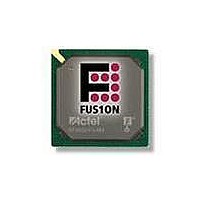AFS600-PQG208 Actel, AFS600-PQG208 Datasheet - Page 10

AFS600-PQG208
Manufacturer Part Number
AFS600-PQG208
Description
FPGA - Field Programmable Gate Array 600K System Gates
Manufacturer
Actel
Datasheet
1.AFS600-PQG208.pdf
(330 pages)
Specifications of AFS600-PQG208
Processor Series
AFS600
Core
IP Core
Maximum Operating Frequency
1098.9 MHz
Number Of Programmable I/os
95
Data Ram Size
110592
Supply Voltage (max)
1.575 V
Maximum Operating Temperature
+ 70 C
Minimum Operating Temperature
0 C
Development Tools By Supplier
AFS-Eval-Kit, AFS-BRD600, FlashPro 3, FlashPro Lite, Silicon-Explorer II, Silicon-Sculptor 3, SI-EX-TCA
Mounting Style
SMD/SMT
Supply Voltage (min)
1.425 V
Number Of Gates
600 K
Package / Case
PQFP-208
Lead Free Status / RoHS Status
Lead free / RoHS Compliant
Available stocks
Company
Part Number
Manufacturer
Quantity
Price
Company:
Part Number:
AFS600-PQG208
Manufacturer:
Actel
Quantity:
135
Company:
Part Number:
AFS600-PQG208I
Manufacturer:
Microsemi SoC
Quantity:
10 000
- Current page: 10 of 330
- Download datasheet (13Mb)
Fusion Device Family Overview
Unprecedented Integration
1 - 4
The FPGA core consists of a sea of VersaTiles. Each VersaTile can be configured as a three-input logic
lookup table (LUT) equivalent or a D-flip-flop or latch (with or without enable) by programming the
appropriate flash switch interconnections. This versatility allows efficient use of the FPGA fabric. The
VersaTile capability is unique to the Actel families of flash-based FPGAs. VersaTiles and larger functions
are connected with any of the four levels of routing hierarchy. Flash switches are distributed throughout
the device to provide nonvolatile, reconfigurable interconnect programming. Maximum core utilization is
possible for virtually any design.
In addition, extensive on-chip programming circuitry allows for rapid (3.3 V) single-voltage programming
of Fusion devices via an IEEE 1532 JTAG interface.
Integrated Analog Blocks and Analog I/Os
Fusion devices offer robust and flexible analog mixed signal capability in addition to the high-
performance flash FPGA fabric and flash memory block. The many built-in analog peripherals include a
configurable 32:1 input analog MUX, up to 10 independent MOSFET gate driver outputs, and a
configurable ADC. The ADC supports 8-, 10-, and 12-bit modes of operation with a cumulative sample
rate up to 600 k samples per second (Ksps), differential nonlinearity (DNL) < 1.0 LSB, and Total
Unadjusted Error (TUE) of 0.72 LSB in 10-bit mode. The TUE is used for characterization of the
conversion error and includes errors from all sources, such as offset and linearity. Internal bandgap
circuitry offers 1% voltage reference accuracy with the flexibility of utilizing an external reference voltage.
The ADC channel sampling sequence and sampling rate are programmable and implemented in the
FPGA logic using Designer and Libero IDE software tool support.
Two channels of the 32-channel ADCMUX are dedicated. Channel 0 is connected internally to V
can be used to monitor core power supply. Channel 31 is connected to an internal temperature diode
which can be used to monitor device temperature. The 30 remaining channels can be connected to
external analog signals. The exact number of I/Os available for external connection signals is device-
dependent (refer to the
With Fusion, Actel also introduces the Analog Quad I/O structure
consists of three analog inputs and one gate driver. Each quad can be configured in various built-in
circuit combinations, such as three prescaler circuits, three digital input circuits, a current monitor circuit,
or a temperature monitor circuit. Each prescaler has multiple scaling factors programmed by FPGA
signals to support a large range of analog inputs with positive or negative polarity. When the current
monitor circuit is selected, two adjacent analog inputs measure the voltage drop across a small external
sense resistor. For more information, refer to the "Analog System
System Characteristics" section on page 2-119
amplify small voltage signals for accurate current measurement. One analog input in each quad can be
connected to an external temperature monitor diode. In addition to the external temperature monitor
diode(s), a Fusion device can monitor an internal temperature diode using dedicated channel 31 of the
ADCMUX.
Figure 1-1 on page 1-5
shown is configured to monitor and control an external power supply. The AV pad measures the source
•
•
•
– RC oscillator
– Crystal oscillator
– No-Glitch MUX (NGMUX)
Digital I/Os with advanced I/O standards
FPGA VersaTiles
Analog components
– ADC
– Analog I/Os supporting voltage, current, and temperature monitoring
– 1.5 V on-board voltage regulator
– Real-time counter
"Fusion Family" table on page I
illustrates a typical use of the Analog Quad I/O structure. The Analog Quad
R e vi s i o n 1
for more information. Built-in operational amplifiers
for details).
Characteristics"
(Figure 1-1 on page
section in the
1-5). Each quad
"Analog
CC
and
Related parts for AFS600-PQG208
Image
Part Number
Description
Manufacturer
Datasheet
Request
R

Part Number:
Description:
AFS600-1FGG256I
Manufacturer:
Actel
Datasheet:

Part Number:
Description:
AFS600-2FGG256I
Manufacturer:
Actel
Datasheet:











